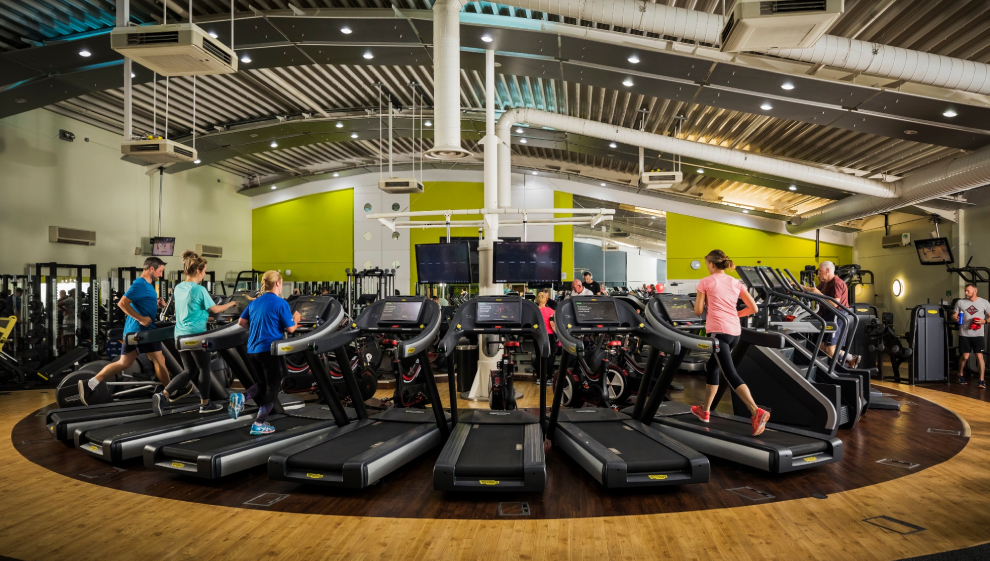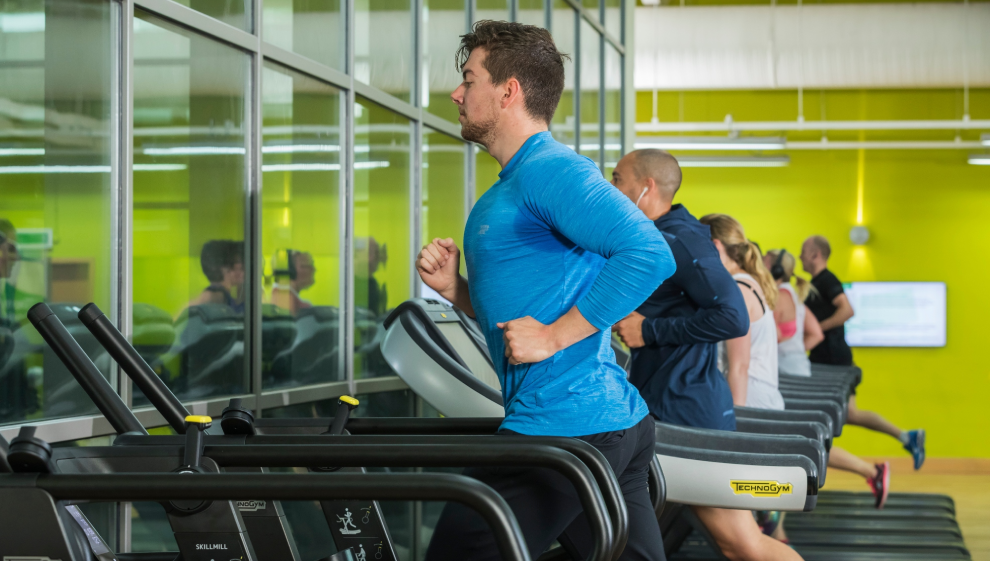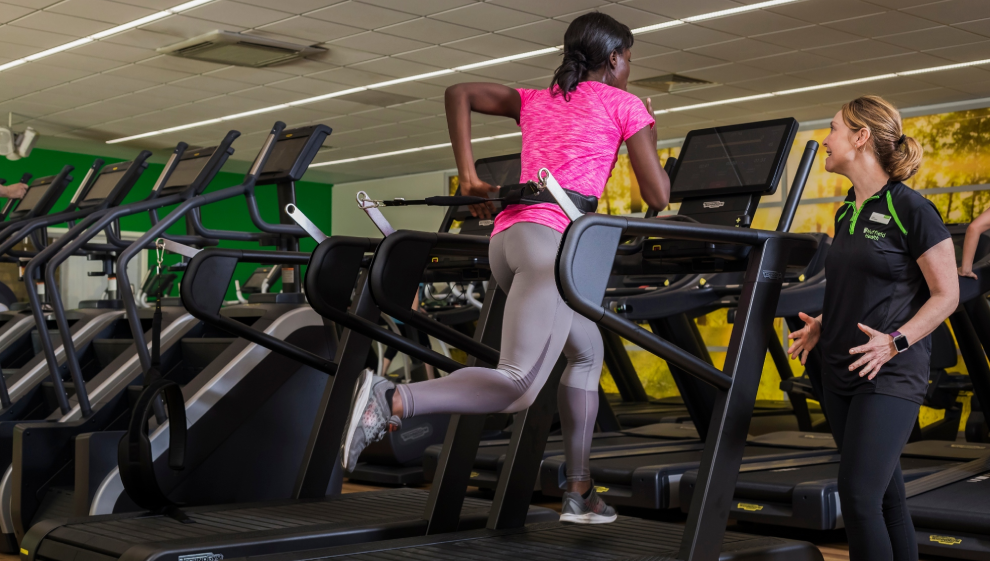6 great treadmill workouts for at home and in the gym
- Overview
How the treadmill can help you
- Weight loss
- Muscle growth
- Building endurance and endurance
- Help with race training
- Lower blood pressure
- Alleviate joint pain
- Build confidence
Best treadmill workout for beginners
- Duration: 20 minutes
- Speed: slow and comfortable
- Incline gradient: 0%
- Difficulty: beginner
- Sets: 5
This is the perfect workout if you’re new to running or the gym. It’s a great place to get comfortable on the treadmill and to ease you into cardiovascular exercise.

- Jog slowly for 3 minutes
- Walk for 1 minute
As your fitness and stamina improves, you’ll remove the need for the walking portion of the set. Duration counts, so don’t start too big. 20 minutes is certainly a great start for such a plan.
Remember, jogging for 20 minutes is the goal. Start slow and reduce your speed if you cannot sustain this level for the full 20 minutes.
Best treadmill workout for weight loss
- Duration: 20 minutes
- Speed: fast and comfortable
- Incline gradient: 0%
- Difficulty: intermediate
- Sets: 13
All movement is great for weight loss.
With that in mind, all the treadmill exercises we’ve included can be used to aid weight loss. For effective and efficient weight loss, we’ve included a high-intensity interval training (HIIT) workout you can do at home or at the gym.
It involves short bursts (1 minute) of intense running on a fast speed, followed by short intervals (30 seconds) of walking on a lower speed. Loop this workout for 20 minutes or roughly 13 sets.
This method of training has been proven effective as part of a wider weight loss regime.
- Run for 60 seconds (high speed)
- Walk for 30 seconds (slow walking speed)
Best treadmill workout for hill running
- Duration: 20 minutes
- Speed: slow
- Incline gradient: start at 3% and adjust by 1% with every set
- Difficulty: intermediate to advanced
- Sets: 5
The treadmill is a brilliant machine for simulating hills at home or in the gym.
Work on 2-minute hill climbs starting at a 3% gradient. Rest for a few minutes in between by returning to a comfortable jogging pace on a 0% incline. Aim to complete your next climb at 4%, 5%, 6% etc.
Adjust your speed during and between climbs if you’re struggling to keep up. Remember, hills are all about endurance. Slow and steady is the name of the game.
Your upper body can really assist with hills, so pump those arms to help generate additional momentum.
Best treadmill workout for fat loss
- Duration: 30 to 45 minutes
- Speed: slow to moderate
- Incline gradient: 0%
- Difficulty: beginner
- Sets: 1
If it’s fat loss you’re looking for, then opt for a low-intensity long walk/jog.
Aim to keep your heart rate at no more than 70% of its maximum and focus on maintaining a steady pace inside whatever time frame you have chosen.
Best treadmill workout for building speed
- Duration: 15 minutes
- Speed: slow to fast
- Incline gradient: 0%
- Difficulty: intermediate to advanced
- Sets: 5
A great way to improve your speed is by using intervals. This means you switch between running at a pace that is comfortable for you and a pace that is slightly faster than this.
Let’s say your normal run speed is 8kph. Start your session at 7kph for a minute then increase to 8.5kph for 30 seconds, returning to 7kph for 1 minute.
With each interval increase your speed by 0.5kph until you reach a level of difficulty you cannot sustain.
You’ll need a slower than normal run speed in order to recover in-between intervals. Eventually, you’ll be able to increase your starting speed and challenge yourself further with the speeds you’re running (or sprinting) at.
Best treadmill workout for building endurance

- Duration: 30 to 60 minutes
- Speed: slow to moderate
- Incline gradient: 0%
- Difficulty: intermediate
- Sets: 1
Running for endurance is all about maintaining a steady pace.
Remove the idea of working too hard before you start. This session is all about running for the allotted time. If you run too fast out the gate and you elevate your heart rate too high, you’ll quickly fatigue.
Drop your speed and intensity and increase duration. Remind yourself that you are running for time and not for distance. These runs are crucial for race training, as they maximise our cardiovascular performance.
Best treadmill workout for targeting the glutes
Walking on an incline is a great way to build the muscles in your glutes. It’s the cardio choice of many at the gym, as you can manipulate the incline gradient to create a steeper climb that suits you.
- Duration: 30 minutes
- Speed: moderate to fast walking speed
- Incline gradient: 5%
- Difficulty: beginner
- Sets: 1
Focus on endurance and walking at a pace you can sustain for 30 minutes. A great way to keep motivated is to put a documentary or series episode on your phone to watch as you walk.
Treadmill vs cross trainer
The treadmill
The Treadmill has no fixed movement pattern other than you putting one foot in front of the other.
Whether this is in running, jogging, walking or climbing fashion, you dictate the movement. It is important to note that if you are training for a running event, then it is running you need to rehearse. There would be little point in using the cross trainer to train for a 5k run.
The cross trainer
The cross trainer is different because it does have a fixed position of movement. This means the machine itself dictates how our legs and arms move.
It has a weight bearing function which also means you are sure to have either a good fitness improving or calorie-burning session.
There is no impact associated with the cross trainer, making it a great alternative for those who experience joint pain.
Frequently asked questions
Where should I start?
The best place to start if you’re new to the gym or you’ve recently purchased a treadmill is slow and steady.
If you’re a new runner, you’re going to want to build up your distance and intensity over time. Following the advice in our “exercises for beginners” section at the top of the page can help with this.
If you’re an experienced runner new to running on a treadmill, we recommend concentrating on feel. This means making sure you’re comfortable with your surroundings and that you aren’t making yourself vulnerable to tripping, poor foot placement, or catching your feet on the back of the belt mid-stride.
Once you’re comfortable, you can start moving on to some of the more intense workouts and exercises we’ve put together above.
Are treadmills safe?
Treadmills are used widely in gyms and fitness centres and are designed to promote safe and secure exercise.
Modern treadmills are incredibly safe thanks to the inclusion of functions like emergency stop systems and tether clips.
If you’re running at speed or doing sprint intervals on a treadmill, it’s vital you use the tether clip provided. This essential safety feature means the belt will stop spinning if you fall or step away from the machine, minimising the risk of serious injury in the event of an accident.
Is running on a treadmill harder than running outdoors?
This is a common question that’s difficult to answer.
If you ran at the same speed and intensity on a treadmill and outside, you’d likely find that you lasted longer on the treadmill. This is because running on a moving belt assists with “leg turnover” (a vital part of your gait and cadence), which makes running faster easier.
Other factors like the weather (wind mainly) and inconsistent terrain underfoot play a role in making road running harder.
It’s important to remember that this isn’t a definitive answer. Unless you’re an athlete or a very fast runner, these performance-based differences aren’t important. Ultimately, it’s about what works best for you. Lots of runners find that doing longer distances outdoors and shorter speed runs like sprints, intervals, and hill runs on a treadmill works well for them.
How accurate are the readings on a treadmill?

You might find that the on-screen information reads slightly differently from machine to machine. This is because most models use a different calculation for working out things like speed and calories burned.
If you’re using one model of treadmill at home or at the gym, this shouldn’t be an issue. If you’re interested in a rough calculation for calories burned during a treadmill workout, you can use the information below as a guide:
- Walking at 3.5 mph (5.6 km/h) on a flat treadmill burns approximately 314 calories per hour
- Running at 6 mph (9.7 km/h) on a flat treadmill burns around 590 calories per hour
- Running at 8 mph (12.9 km/h) on a flat treadmill can burn roughly 920 calories per hour
Can I train for a race on a treadmill?
Absolutely. Many professional athletes and amateurs alike utilise treadmills as part of their training.
The ability to create an incline, adjust speed settings and log important data make the treadmill a vital training partner for many runners.
If you’ve got a race in the diary, a training plan is essential for maximising performance on the day. Wondering what a plan means for you and your running? Click any of the links below to find out:
- Our beginner 5k race training plan
- Our beginner 10k race training plan
- Our beginner half-marathon training plan
- Our beginner marathon training plan
Last updated Tuesday 12 December 2023
First published on Monday 11 December 2023

